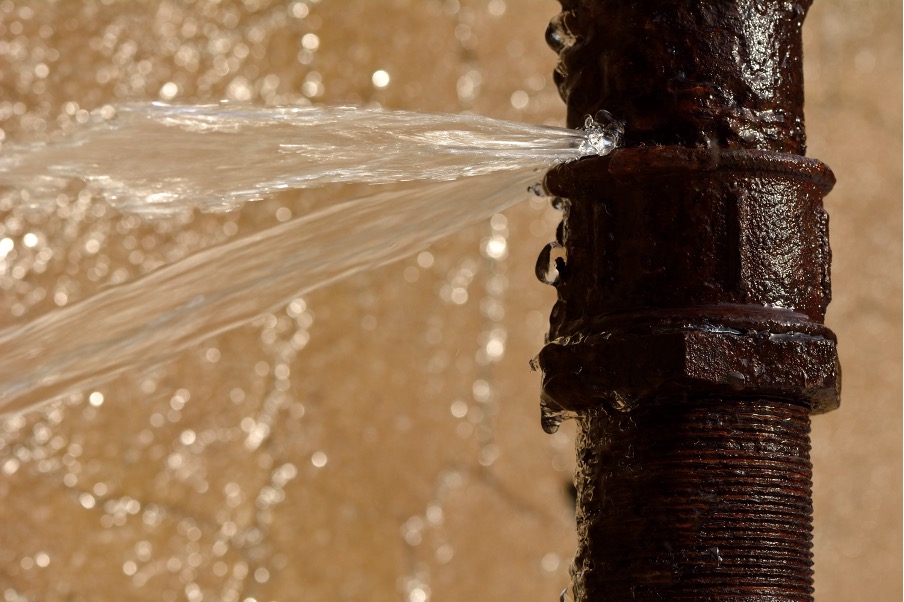Guide To Water Leakage Detection In Your Home
Guide To Water Leakage Detection In Your Home
Blog Article
This article below relating to Locating water leaks is immensely interesting. Try it and make your own assumptions.

Early detection of leaking water lines can reduce a possible calamity. Some small water leakages may not be visible.
1. Analyze the Water Meter
Every home has a water meter. Checking it is a proven way that assists you uncover leakages. For beginners, shut off all the water sources. Make sure no one will purge, make use of the tap, shower, run the cleaning equipment or dish washer. From there, most likely to the meter and also watch if it will certainly transform. Considering that no person is using it, there need to be no movements. If it relocates, that shows a fast-moving leak. Similarly, if you find no changes, wait a hr or 2 and examine back once again. This indicates you might have a sluggish leakage that can also be underground.
2. Check Water Consumption
If you find unexpected adjustments, in spite of your consumption being the exact same, it suggests that you have leakages in your plumbing system. An unexpected spike in your costs indicates a fast-moving leak.
A consistent rise every month, even with the same practices, shows you have a slow-moving leak that's also slowly rising. Call a plumber to extensively check your residential property, specifically if you really feel a warm location on your floor with piping below.
3. Do a Food Coloring Test
When it comes to water usage, 30% comes from bathrooms. Test to see if they are running appropriately. Decline specks of food shade in the storage tank and also wait 10 minutes. If the shade in some way infiltrates your dish during that time without flushing, there's a leak in between the storage tank and also dish.
4. Asses Outside Lines
Do not forget to inspect your exterior water lines as well. Test faucets by connecting a garden hose pipe. Needs to water seep out of the connection, you have a loose rubber gasket. Change this as well as guarantee all links are tight. If you've obtained an automatic sprinkler, it will certainly aid get it properly examined and kept annually. One small leakage can squander tons of water and also increase your water bill.
5. Assess the situation and evaluate
Home owners ought to make it a behavior to check under the sink counters and also also inside cabinets for any type of bad odor or mold development. These 2 red flags suggest a leak so timely attention is needed. Doing routine inspections, even bi-annually, can save you from a significant trouble.
Examine for stainings and damaging as many home appliances and also pipes have a life expectations. If you believe dripping water lines in your plumbing system, do not wait for it to rise.
Early discovery of dripping water lines can mitigate a possible disaster. Some tiny water leakages might not be visible. Inspecting it is a guaranteed way that helps you discover leakages. One tiny leak can lose bunches of water and spike your water costs.
If you believe leaking water lines in your plumbing system, do not wait for it to escalate.
WARNING SIGNS OF WATER LEAKAGE BEHIND THE WALL
PERSISTENT MUSTY ODORS
As water slowly drips from a leaky pipe inside the wall, flooring and sheetrock stay damp and develop an odor similar to wet cardboard. It generates a musty smell that can help you find hidden leaks.
MOLD IN UNUSUAL AREAS
Mold usually grows in wet areas like kitchens, baths and laundry rooms. If you spot the stuff on walls or baseboards in other rooms of the house, it’s a good indicator of undetected water leaks.
STAINS THAT GROW
When mold thrives around a leaky pipe, it sometimes takes hold on the inside surface of the affected wall. A growing stain on otherwise clean sheetrock is often your sign of a hidden plumbing problem.
PEELING OR BUBBLING WALLPAPER / PAINT
This clue is easy to miss in rooms that don’t get much use. When you see wallpaper separating along seams or paint bubbling or flaking off the wall, blame sheetrock that stays wet because of an undetected leak.
BUCKLED CEILINGS AND STAINED FLOORS
If ceilings or floors in bathrooms, kitchens or laundry areas develop structural problems, don’t rule out constant damp inside the walls. Wet sheetrock can affect adjacent framing, flooring and ceilings.
https://www.servicemasterbyzaba.com/blog/how-to-detect-water-leakage-in-walls/

I was made aware of that article on Top leak detection hacks from an associate on another web page. Do you know another individual who is involved in the topic? Take a moment to promote it. Thank you for taking the time to read it.
Report this page